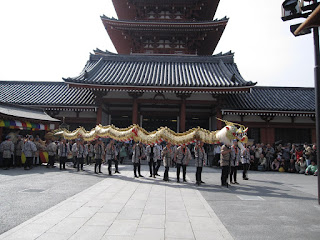
As I began my exploration of Japan I was not sure how the native people would receive foreigners. Knowing that Japan is a “polite society” but not exactly sure to what degree I made great efforts to be extra polite in every little thing I did in public. (It was definitely a challenge trying to be more polite than the Japanese.) My days spent exploring Japan’s historical and religious sites, such as imperial castles, Buddhist temples, and Shinto shrines, have allowed me to understand the degree of toleration Japanese people have for foreigners. At first, I mistakenly took Japanese people to be the most tolerable race of people on this planet because their overt public display of politeness. I thought Japanese people don’t ever say no and they don’t (at least not directly). They, i.e. Japanese people who are willing to interact with foreigners, often welcome you (foreigners) to try and experience anything that’s Japanese, especially you indicate your curiosity with some signs of enthusiasm and interest. This was definitely not the case when my friends and I visited Fushimi Inari last month. Our visit that day coincided with an event in which Shinto priests and priestess were praying for fertility and prosperity. Like many other shrines we were allowed take pictures of anything that awed us. We took lots of pictures of tori, shrines, and statues. However, we were not allowed to turn our cameras in the direction of the ceremony. My friends and I were quite shocked that for the first time we’ve encountered an aggressive Japanese person (the guard), who directly said “No” to visitors who were trying to take pictures. Of course, it was understandable as to why we weren’t allowed to take pictures of the event. As if the small “No Camera” sign in front of the building was not good enough to warn people, a guard was needed to confront any delinquent visitors. The guard was definitely not shy about showing visitors the “X” sign by crossing his arms in front of his chest. Obviously there’s a limit to everything. No exceptions with Japanese people’s willingness to allow outsiders to prod around during their sacred moments of worship.
Like other cultures, Japan has drawn its boundary between what is and is not acceptable. For a foreigner who wants to take advantage of the native people’s goodwill in tolerating our curiosity, I have learned that in order to gain additional access to something, you must first learn to obey the rules. In the case above, anyone who wanted to see the ceremony must put their cameras away. Anyone who disobeys will probably be removed and prohibited from coming near the ceremony.
In addition, from this blog project, I’ve learned that making guesses about the outer appearance of anything Japanese without any insightful knowledge of such thing can be misleading. While foreigners are allowed to prod around on the outside (soto), we really haven’t officially gained access into the inside world (uchi). To me Japanese society is like a gated world; some of us may think we’ve discovered Japan and everything about it, but in fact our presumptions only reflect our shallow understanding of what’s really on the other side. Through my experience in Japan in the last few months, I’ve learned that there are very limited doors that can give you access to the inside. On the other hand, I think that visitors are trapped in a path of their own in their exploration of Japan. Like visitors walking through the paths of tori at Fushimi Inari, first time visitors to the country have to travel a set path that helps introduce them to the land. Eventually, most first time visitors end up sharing the same experience and impressions of Japan. Only a few of those who’ve figured out how to digress can explore more of the tucked away details of the shrine. Though, of course, it is essential for most first time visitors, whether native Japanese or foreigners exploring any parts of Japan, to have a general idea and experience at the new place without worrying too much about knowing the local custom and culture.
 (Fascinated visitors at Todaiji Temple, Nara during the memorial service of Emperor Shomu. Wonder if these people are here for the service or just surprised to have caught such an interesting procession. )
(Fascinated visitors at Todaiji Temple, Nara during the memorial service of Emperor Shomu. Wonder if these people are here for the service or just surprised to have caught such an interesting procession. )














